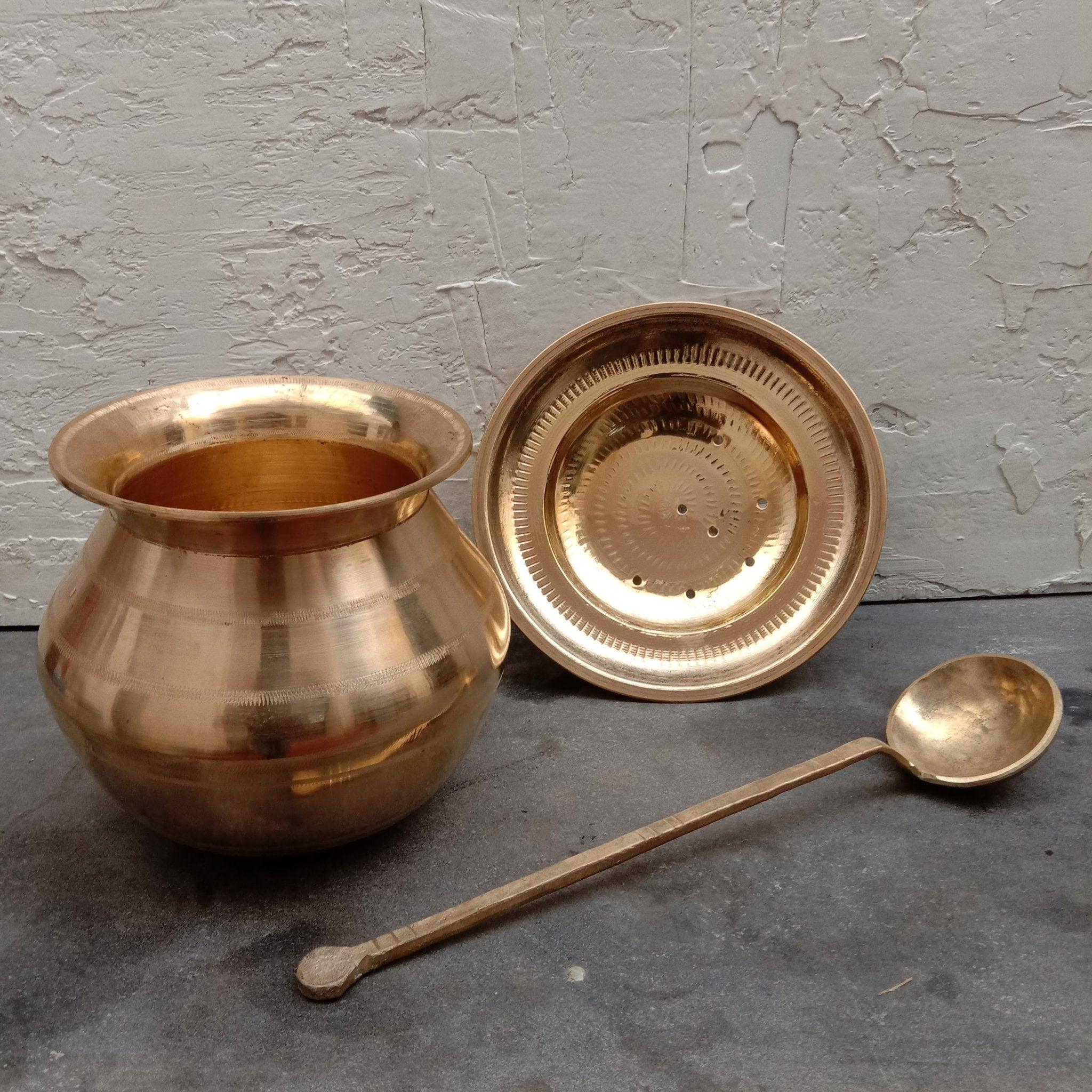Origin of Onam Celebration in Kerala
The origin of Onam celebration in Kerala is rooted in ancient Indian mythology and folklore. The festival is closely associated with the legendary King Mahabali, who is believed to have ruled Kerala in a prosperous and just manner. The story of Onam is often narrated through the legend of King Mahabali's benevolence and his eventual encounter with Lord Vishnu. Here's a brief overview of the origin of Onam:
Legend of King Mahabali:
According to Hindu mythology, King Mahabali, also known as Maveli, was a virtuous and generous ruler who gained immense power and control over the three worlds. His reign was characterized by prosperity, harmony, and the well-being of his subjects. However, his growing influence began to concern the gods, particularly Lord Indra (the king of the gods), who felt threatened by Mahabali's popularity.
Vamana Avatar of Lord Vishnu:
To address the situation, Lord Vishnu took on the form of a Brahmin dwarf named Vamana. Disguised as Vamana, Lord Vishnu approached King Mahabali and requested a piece of land that could be covered by three steps. Mahabali, known for his generosity, agreed to the request.
In an unexpected turn of events, Vamana grew in size and covered the entire universe in three steps. The first step covered the earth, the second the heavens, and the third step took place on Mahabali's head. As a result, Mahabali was pushed down to the netherworld (Patala).
Blessing and Annual Visit:
Despite his banishment, Mahabali's devotion and virtue earned him a special blessing from Lord Vishnu. Vishnu granted Mahabali the opportunity to visit his kingdom, Kerala, once a year to see his people and ensure their well-being. This annual visit is believed to coincide with the Onam festival, during which Keralites welcome Mahabali with grand celebrations.
Symbolism of Onam:
Onam is a celebration of the return of King Mahabali, and it signifies the values of equality, prosperity, and harmony. The festival also marks the harvest season, adding an agricultural aspect to its significance. The grand feasts, cultural performances, boat races, and other festivities that take place during Onam reflect the spirit of joy and unity associated with Mahabali's rule.
In summary, the origin of Onam is deeply intertwined with the legend of King Mahabali and Lord Vishnu's Vamana avatar. The festival is a way for the people of Kerala to commemorate Mahabali's virtuous rule, celebrate their cultural heritage, and express gratitude for the bountiful harvest. It serves as a reminder of the values of kindness, generosity, and the importance of community.
Traditions associated with Onam Celebration
Onam is a traditional and widely celebrated festival in the southern Indian state of Kerala. It is a harvest festival that holds immense cultural significance and is marked by several customs and traditions. The festival usually falls in the Malayalam month of Chingam, which corresponds to the months of August or September on the Gregorian calendar. Here are some of the key traditions behind Onam celebration in Kerala:
- Pookalam (Floral Rangoli): One of the most prominent aspects of Onam is the creation of intricate and colorful floral rangoli designs called "Pookalam." People decorate the entrances of their homes with these beautiful patterns made from various types of flowers. Each day of the festival, the size and complexity of the Pookalam increase, reaching its pinnacle on the final day.

- Onam Sadya (Feast): The Onam Sadya is a grand and sumptuous vegetarian feast served on banana leaves. It includes a variety of dishes, usually around 20 to 30 different items, ranging from rice, curries, vegetables, pickles, and desserts. The elaborate feast is a symbol of unity, as people from all walks of life come together to enjoy the meal.
- Vallam Kali (Boat Race): Kerala's famous snake boat races, known as "Vallam Kali," are a significant part of Onam celebrations. Teams of oarsmen paddle traditional longboats in various rivers and water bodies. The most famous of these races is the Nehru Trophy Boat Race, held on the Punnamada Lake in Alappuzha.

- Pulikali (Tiger Dance): Pulikali is a traditional folk art form where people paint themselves as tigers and hunters in vibrant colors. This colorful street performance involves dancers imitating the movements of tigers and enacting scenes of hunting. It adds an element of entertainment and excitement to the festival.

- Onathappan (Pookalam Design): Onathappan is a pyramid-shaped floral arrangement made in honor of King Mahabali, the legendary ruler associated with Onam. It is believed that Mahabali's spirit visits Kerala during Onam, and the Onathappan is placed at the center of the Pookalam as a representation of his presence.
- Kaikottikali and Thumbi Thullal: These are traditional folk dances performed by women during Onam. Kaikottikali involves dancing in a circle, clapping hands, and singing traditional songs. Thumbi Thullal is a dance where women dance around a Pookalam singing Onam-themed songs.
- Onam Games and Competitions: Various traditional games and competitions are organized during the festival, including tug-of-war, sack races, and ball games. These activities bring communities together and add an element of fun and excitement to the celebrations.
- Onam Clothes: People often wear new clothes, especially traditional attire like white and gold-bordered saris for women and white dhotis with golden borders for men, during the Onam festival.
- Onam Songs and Performances: Songs and performances that narrate the story of King Mahabali and the spirit of Onam are an integral part of the celebration. Folk performances, cultural events, and stage shows are organized to showcase Kerala's rich cultural heritage.
These traditions collectively create a vibrant and festive atmosphere during Onam, fostering a sense of unity, cultural pride, and joy among the people of Kerala.
Mouthwatering Delicacies made on Onam Festival
During the Onam festival in Kerala, a grand and sumptuous vegetarian feast known as the "Onam Sadya" is the highlight of the celebrations. The Sadya consists of an array of dishes, both savory and sweet, served on a banana leaf. Here are some of the famous delicacies that are commonly prepared and enjoyed during Onam:

- Avial: Avial is a mixed vegetable curry made with a variety of vegetables like carrots, beans, pumpkins, and yams, cooked in a coconut and yogurt-based gravy. It's seasoned with curry leaves and mustard seeds.
- Sambar: Sambar is a flavorful lentil stew made with vegetables and a tangy tamarind base. It's seasoned with a special blend of spices and often includes ingredients like drumsticks, brinjal (eggplant), and tomatoes.
- Rasam: Rasam is a spiced tamarind soup, light and tangy in flavor. It's seasoned with mustard seeds, curry leaves, and other spices. In Onam Sadya, varieties of rasam like "Parippu Rasam" (made with lentils) or "Inji Rasam" (made with ginger) are popular.
- Pulissery: Pulissery is a yogurt-based curry made with vegetables like ash gourd or cucumber. It has a slightly tangy and mildly spiced flavor, often garnished with fried coconut.
- Olan: Olan is a simple curry made with ash gourd, red beans, and coconut milk. It has a delicate flavor and is usually mild in terms of spices.
- Kaalan: Kaalan is a curry made from yogurt, raw bananas, and yam. It has a creamy and mildly spiced taste, often garnished with grated coconut.
- Thoran: Thoran is a dry vegetable dish made by sautéing finely chopped vegetables like cabbage, beans, or carrots with grated coconut and spices.
- Pachadi: Pachadi is a type of chutney or condiment made with vegetables, fruits, or even lentils cooked in a spiced yogurt base. It's both sweet and tangy.
- Payasam: Payasam is a sweet dish akin to a pudding or a porridge. It's made using various ingredients like rice, vermicelli, lentils, or fruits, cooked in milk and sweetened with jaggery or sugar. "Palada Payasam" (made with rice flakes) and "Ada Pradhaman" (made with jaggery and rice flakes) are popular varieties during Onam. These are usually made in traditional Bronze Uruli.

- Banana Chips: Crispy banana chips are a quintessential snack during Onam. These are thin slices of unripe bananas deep-fried to perfection.
- Arishtam: Arishtam is a traditional sweet beverage, often made using jaggery, rice, and spices. It's a part of Onam Sadya and is usually served towards the end of the meal.
These are just a few examples of the many dishes that make up the elaborate Onam Sadya. The meal is meant to be a feast of flavors, textures, and colors, representing the diverse culinary heritage of Kerala.
Significance of Onam Celebration for all of us
Onam is a festival of immense cultural significance in the Indian state of Kerala. It holds a special place in the hearts of Keralites and is celebrated with great enthusiasm and fervor. The cultural significance of Onam can be understood through various aspects of the festival:
- Celebration of Unity and Harmony: Onam brings people from all walks of life together, irrespective of their social or economic backgrounds. The festival promotes a sense of unity, fostering a feeling of togetherness among the people of Kerala.
- Remembrance of a Golden Age: Onam is linked to the legendary reign of King Mahabali, who is believed to have ruled Kerala during a golden age of prosperity, justice, and harmony. The festival serves as a remembrance of this virtuous ruler and his ideals, emphasizing values like fairness, generosity, and welfare for all.
- Cultural Heritage: Onam provides a platform for showcasing Kerala's rich cultural heritage. The traditional art forms, music, dance performances, and rituals that are part of the festival help preserve and promote the unique cultural identity of the state.
- Agricultural Celebration: Onam is celebrated at the time of the harvest season, highlighting the agricultural significance of the festival. It's a time when farmers celebrate the bounty of their hard work and offer gratitude for the agricultural abundance.
- Reverence for Nature: The floral decorations (Pookalam) and the use of natural materials in the celebrations underscore Kerala's reverence for nature. The intricate flower arrangements reflect the close relationship between people and the environment.
- Feasting and Sharing: The grand Onam Sadya (feast) is a symbol of sharing and communal harmony. The tradition of serving and enjoying food together reflects the idea of inclusiveness and the importance of sharing abundance with others.
- Traditions and Rituals: Onam is marked by various traditions, rituals, and customs that are passed down through generations. These rituals, such as making Pookalam designs, performing Pulikali (tiger dance), and participating in boat races, connect people to their cultural roots.
- Community Bonding: Onam strengthens social bonds within communities and families. People come together to participate in various events, games, and cultural activities, fostering a sense of belonging and camaraderie.
- Festival of Joy: Onam is a time of joy, happiness, and festivities. The elaborate celebrations, traditional performances, and lively atmosphere uplift the spirits of the people and provide a break from their routine lives.
In summary, the cultural significance of Onam lies in its ability to bind the people of Kerala to their roots, foster unity, and harmony, celebrate the state's cultural diversity, and promote values of generosity, inclusiveness, and respect for nature. The festival serves as a cultural touchstone, reminding people of their shared history, values, and the essence of being Keralites.




2 comments
Shreecaterers
Wonderful insight into Kerala’s Onam traditions! Your description of the cultural significance and food makes the celebration even more special.
harish
its wonderful blog about onam in my memory’s onam is a wonderful thing afer onam exams there are 10 days leave at that time mothers brothers are camed in our home they gives as traditional gifts but now there is no traditional gifts gift shop but now a days i found one you can also buy from there https://www.angroos.com/product-category/onam-gifts/ plz go through the website and go back word of old memorys
Leave a comment
All comments are moderated before being published.
This site is protected by hCaptcha and the hCaptcha Privacy Policy and Terms of Service apply.